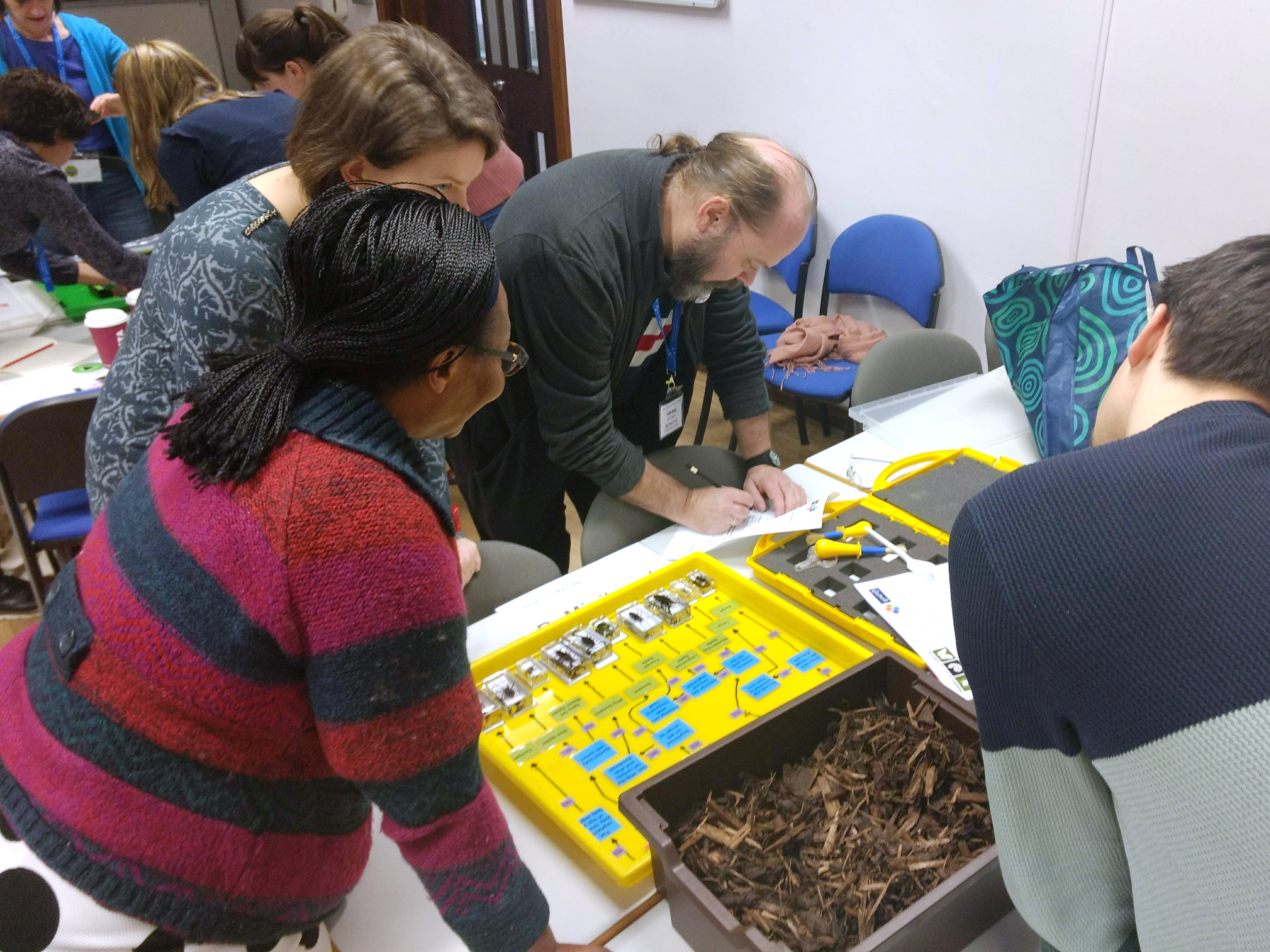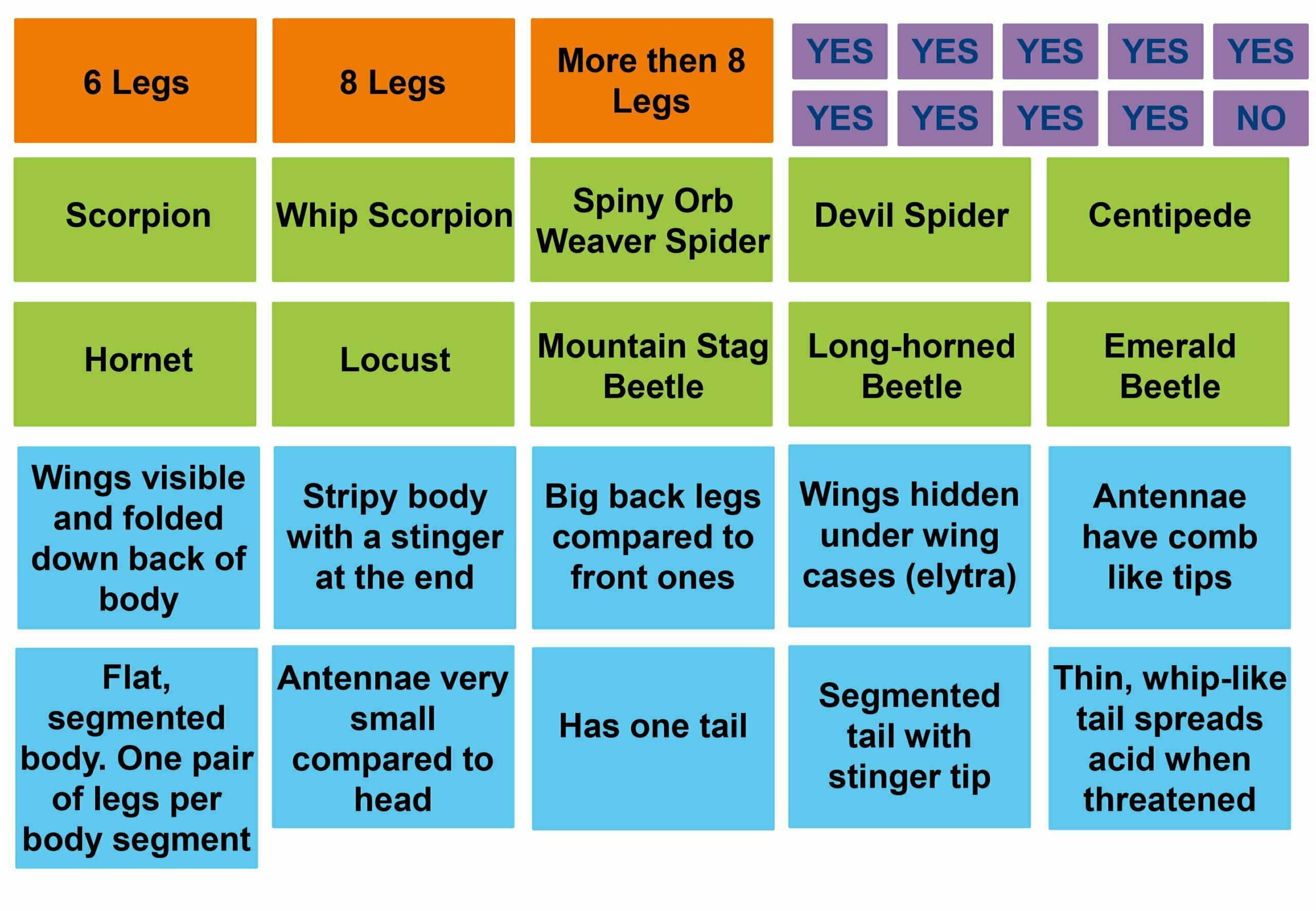Minibeast key
This activity was created as part of a Gratnells What’s In My Tray CPD workshop for primary science teachers and teaching assistants to support practical work and delivery of the curriculum. It can be carried out as a stand-alone activity for students or combined with other activities from the session to form a STEM carousel.

The Minibeasts SmartCase used in this activity is available from Natural Selection Learning.
You will need (per team of 4):
- 1 x Natural Selection Learning Minibeast SmartCase
- 1 x Dark brown deep (F2) Gratnells tray
- Woodchip/play bark sufficient to half fill the deep tray
- 4 x Brushes
- 4 x Spoons
- 4 x Hand lenses
- 1 x Yellow Gratnells art tray to work in
- Laminated key pathway cards
- Dry wipe pen
- Dot stickers for the minibeasts numbered 1-10
Preparation:
Print and laminate the key pathway cards. Lay out the key in the art tray as per the photograph, using the pen to link the cards. Put the dot stickers on to the end of the resin blocks following the same numbering system used on the ID chart provided with the minibeasts. Half-fill the brown tray with wood chip/play bark. Hide the numbered minibeasts in the woodchip tray. Put the brushes, spoons and magnifying glasses into the SmartCase and close it. Sit the SmartCase on top of the woodchip tray.
This activity also works as an individual challenge, just increase the amount of time allocated to complete it. This activity can be repeated as many times as required and can be completed by individuals or small groups.
What to do:
- Lift up the Minibeast SmartCase to reveal the woodchip filled tray underneath.
- Hunt for the minibeasts hiding in the woodchip using the brushes and spoons stored inside the SmartCase.
- Handle the minibeasts carefully so as not to damage them.
- Use the key in the Gratnells art tray to identify all 10 minibeasts.
Tip: You may need to use a magnifying glass to see all their interesting features.
- When you are happy with your identification, place each minibeast on to its own space at the bottom of the key. Record the letter and number pairs on your answer sheet e.g. M 7. (Each minibeast has a number sticker on its end)
- Take a photograph of your finished key, complete with minibeasts.
Tidy up time:
- Hide the minibeasts back in the woodchip.
- Put all other equipment back into the SmartCase and close it.
- Sit the SmartCase back on top of the woodchip tray.
Answers:
- A 7
- B 6
- C 2
- D 4
- E 8
- F 10
- G 5
- H 9
- I 1
- J 3
Other things to try…
- What other common minibeasts (invertebrates) do you know? e.g. worms, ladybirds, millipedes, snails, slugs, woodlice. Can you find any in your school grounds or local green outdoor space? A free guide to carrying out an outdoor minibeast hunt can be found here on Learning Rooms. Once you have collected or research some other minibeasts can you add them to the key? Do you have to add more categories and questions? For example, ‘no legs’. You may need to expand your key in to a second art tray.
- Explore other minibeast identification keys, such as those produced by the Field Studies Council or Gatekeeper Guides.
- Draw or paint your favourite minibeast and label their body parts.
- Make your favourite minibeast from natural or recycled materials.
- Share your photographs on social media using #WhatsInMyTray
Health & Safety
As with all Gratnells Learning Rooms What’s In My Tray Activities, you should carry out your own risk assessment prior to undertaking any of the activities or demonstrations.


